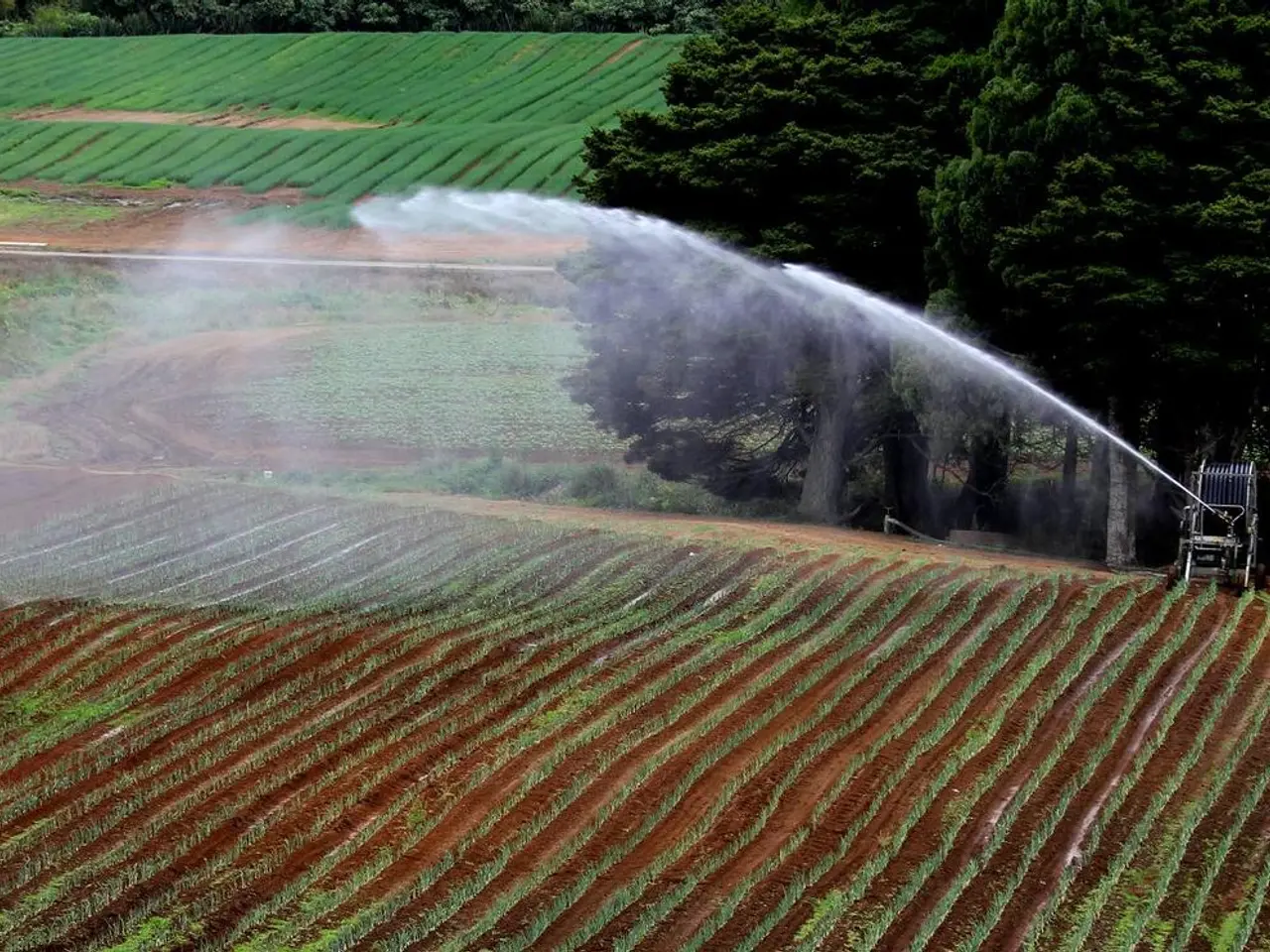Discussion with Professor Ramesh Chand Uncovers Strategies for Agricultural Transformation within the Vision of Developing India (Viksit Bharat)
The Krishi Vikram event, held recently, saw Prof. Ramesh Chand, Member of NITI Aayog, outline a vision for India's agriculture sector, linking it to the country's aspiration of becoming a developed economy by 2047.
In his address, Prof. Chand highlighted the need to view agriculture as part of a broader agri-food system, crucial for employment generation, modernization, and sustainability in achieving India's development goals. He emphasized that this approach would ensure economic upliftment and sustainability, as the per-hectare productivity of fruits and vegetables is six times that of field crops.
NITI Aayog is working towards transforming Indian agriculture through innovation, focusing on sustainable practices, improved nutrition, and increased farmers' income. Efforts are underway to digitize the agriculture sector, with initiatives like 'Krishi Neev,' which includes farm advisory services, price prediction, and blockchain for quality certification.
To meet the 8% national growth target, agriculture must maintain a 'new normal' of 5% growth, according to Prof. Chand. The current strategy shows promising acceleration, with India's agriculture sector achieving 4.6% growth, and some states surpassing 7%.
The conversation at the Krishi Vikram event focused on workforce planning, diversification, skilling, and capital investment in agriculture. Reskilling 15-18 crore workers will be essential as the nature of agri jobs shifts from traditional cultivation to high-tech, value-driven roles.
Prof. Chand called for agriculture to be repositioned as a demand-led, high-value system, focusing on diversification into horticulture, livestock, and fisheries. He also endorsed a rationalization of GST on food products to boost domestic demand and incentivize food processing, logistics, and allied industries.
The session concluded with a resounding acknowledgment of ICC's foresight in choosing such a timely and critical theme. Prof. Chand praised ICC for its 100-year legacy, stating that advocacy for agriculture becoming central to centennial celebrations reflects a deep understanding of the sector's pivotal role in India's future.
While farmers contribute 85% of all agri investments, corporate participation is a mere 0.2%, as stated by Prof. Chand. To meet the growing demands of the sector, there is an urgent need to formalize and upskill the rural women workforce to ensure their growing participation translates into dignity, higher wages, and long-term security.
The recent surge in rural women's workforce participation is not solely due to demographic transition, but a conscious entry of women into the labour force in rural India. This trend, coupled with the rebound of agricultural employment share from 43% to 46%, indicates a promising future for India's agriculture sector.
As India moves towards becoming a developed nation, agriculture will play a significant role in employment, as highlighted by Prof. Chand. To ensure this, NITI Aayog is developing an Agriculture Transformation Index to measure state performance across inputs, sustainability, productivity, policy, and farmers' income.
Moreover, policies are being developed to promote agroforestry and bamboo as viable alternatives, addressing environmental and economic sustainability. This integration of agriculture with development goals for 2047 underscores its contribution to economic and environmental objectives.
In conclusion, the strategy focuses on transforming Indian agriculture through innovation, sustainability, and digitalization, positioning it as a key sector for employment and economic growth, essential for India's vision of becoming a developed economy by 2047.
[1] https://www.niti.gov.in/writereaddata/files/document_publication/Agriculture-India-2047-The-NITI-Aayog-Strategy-for-Transformation.pdf [2] https://www.niti.gov.in/writereaddata/files/document_publication/Agriculture-India-2047-The-NITI-Aayog-Strategy-for-Transformation.pdf [3] https://www.niti.gov.in/writereaddata/files/document_publication/Agriculture-India-2047-The-NITI-Aayog-Strategy-for-Transformation.pdf [4] https://www.niti.gov.in/writereaddata/files/document_publication/Agriculture-India-2047-The-NITI-Aayog-Strategy-for-Transformation.pdf [5] https://www.niti.gov.in/writereaddata/files/document_publication/Agriculture-India-2047-The-NITI-Aayog-Strategy-for-Transformation.pdf
(First published on: 11 Jul 2025, 05:11 IST)
- The NITI Aayog's agricultural strategy, outlined in the document "Agriculture-India 2047," emphasizes the importance of policy and legislation in fostering education-and-self-development, focusing on workforce planning, skilling, and digitization to transform India's agriculture sector, catering to the country's ambition of becoming a developed economy by 2047.
- In the context of India's pursuit of development goals, the politics of agriculture are increasingly being recognized for their role in general-news discussions, as evidenced by the Krishi Vikram event, where Prof. Ramesh Chand underscored the need for rationalization of GST on food products and promotion of horticulture, livestock, and fisheries, among other initiatives, to ensure agriculture contributes significantly to employment and economic growth, essential for India's vision of becoming a developed economy by 2047.




